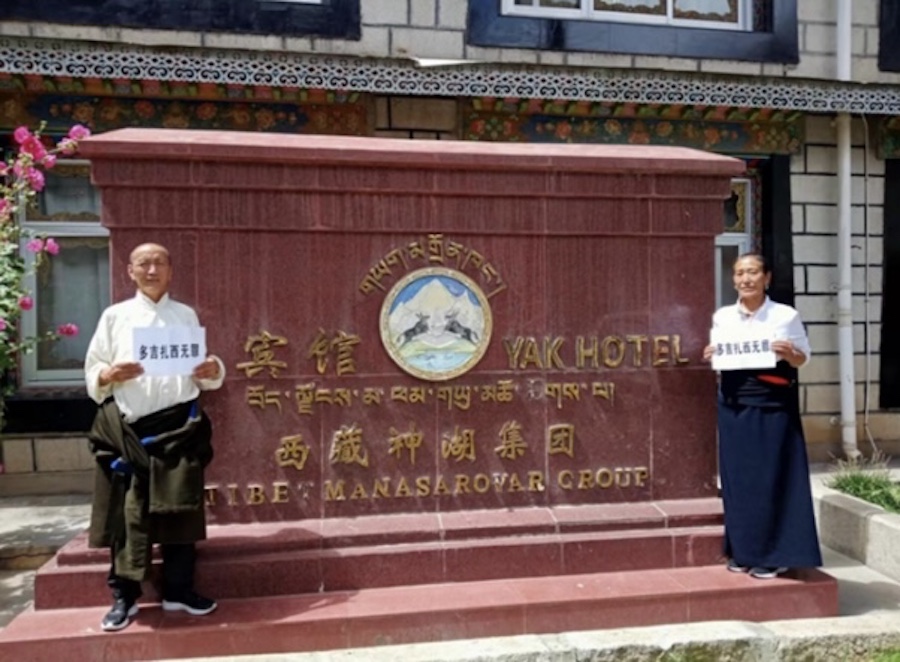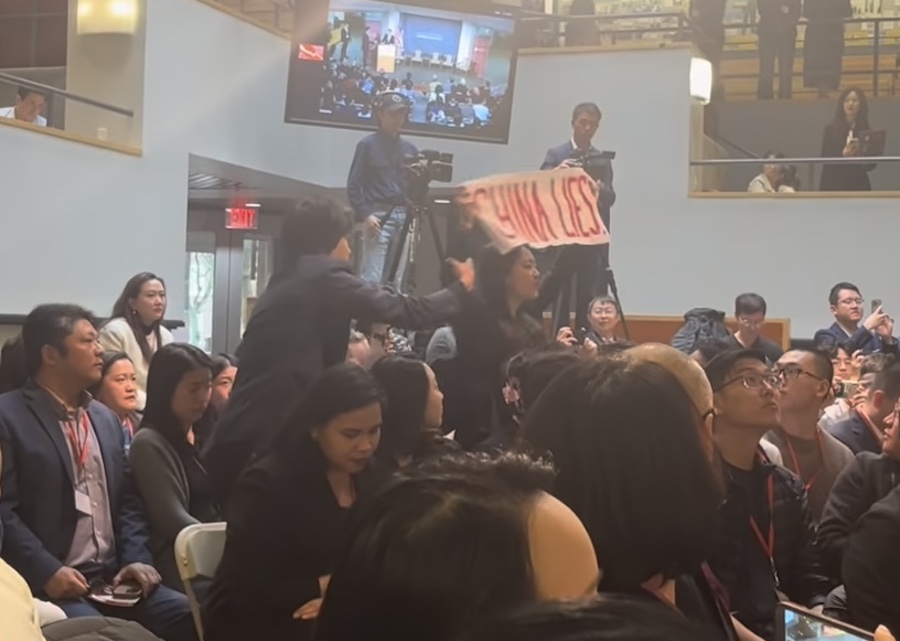By Jason Margolis
Seattle Times staff reporter
Nathan Gardner, front, and others of the Seattle Shambhala Buddhist Meditation Group, meditate at the Shambhala Center on Capitol Hill.
On the surface, a Zen Buddhist looks and behaves quite differently from a Buddhist practicing in the Tibetan or Sri Lankan tradition — the chants, the language, the writings are all different. But peel back the layers and the ultimate goal is the same: awakening to the nature of reality and freedom from suffering.
With this notion, that different types of Buddhists are more alike than not, the Northwest Dharma Association is working to transform itself, to create a tighter, better-connected society of Buddhists in the Northwest.
For the past decade, the association has been little more than a few volunteers organizing meditation retreats and producing a newsletter and Web site with information for the Northwest’s Buddhists.
But this winter, the association is structuring itself to become a more formal, partly elected board and volunteer council of 31 participating Buddhist sanghas, or communities, in the Northwest.
“The sum is greater than the parts,” said Steve Wilhelm, a board member who helped transform the association. He said the new organization will help the largely disconnected Buddhist groups in the Northwest meld, learn about each other and from each other.
“It’s a basic tenet of all the Buddhist schools to be mindful, to be aware of what’s happening. If they’re mindful of each other, then they can be supportive of each other.”
In the past several decades, Buddhism has become increasingly popular among many American-born who have turned to the dharma, truth or teaching, for spiritual guidance.
According to the American Religious Identity Survey, there were an estimated 1,082,000 Buddhists in the United States in 2001, up 170 percent from 401,000 in 1990. Other estimates place the most-current figure as high as 2.4 million Buddhists in America. The Northwest, California and the Northeast are the largest Buddhist areas, with a division between American-born practitioners and the Asian-temple community — largely Asian immigrants.
Across the world, perhaps one-eighth of the world’s population practices Buddhism, with dozens of different strains spread throughout Asia.
The religion or philosophy of Buddhism first appeared some 2,500 years ago in India when the 29-year-old Siddhartha Gautama, a prince who came to be known as the Buddha, left the indulgences of his palace in a quest to discover the truth. After experimenting with a life of self-denial, starvation and self-inflicted pain, the Buddha sought a middle ground. He sat quietly under the Bodhi Tree for 49 days until he awakened and achieved enlightenment.
Over the centuries, the teachings, or the Four Noble Truths, of the Buddha spread throughout Asia and split into two main schools: the Theravada tradition in Sri Lanka and much of Southeast Asia, and the Mahayana, popular in China, Korea, Tibet and Japan. From there, Buddhism has splintered into smaller sects, such as Zen in Japan, an offshoot of the Mahayana tradition.
With so many Buddhist sects, often with subtle differences to an outsider, it can be difficult for someone interested in the dharma or meditation to determine what brand of Buddhism will best fulfill their needs.
Until now, for many Americans looking to discover Buddhism, finding the right group was largely a matter of luck. “It’s like falling in love: You’re at the right place at the right time,” said Shelley Pierce, who was first introduced to Shambhala teaching, from the Tibetan Buddhist tradition, 30 years ago and is now on the new Northwest Dharma Association board.
She and others in the association hope the reorganization will make discovering Buddhism easier. “It (the association) becomes an introduction to all the Buddhist groups in the Northwest. We can find out what people are interested in. Meditation? Study?”
Buddhists don’t recruit or proselytize but will help people explore how the teachings of the Buddha and meditation can improve their lives. The Dalai Lama, the world’s best-known Buddhist leader, urges Westerners to practice their own belief, then if they’re really interested, try Buddhism.
Pierce emphasized that in the United States, one doesn’t have to abandon his identity to practice Buddhism — many people retain their own religion while studying Buddhism or meditating to add an extra spiritual component. “The teaching has been adapted to bring what the Western world needs,” said Pierce.
Besides reaching out to those newly interested in Buddhism, Wilhelm said the association’s restructure will create ties between the Western-oriented Buddhists and the Asian-temple community.
A tighter organization will also enable more effective planning and implementation of events, such as “Change Your Mind Day,” an annual gathering in 40 U.S. cities, including Seattle, to honor the teachings of the Buddha.
Teachers and practitioners from different Buddhist traditions, and others who are curious, will join together for meditation, talks and music in Seattle’s Volunteer Park on Aug. 9.
Currently there are 31 groups that have joined the new Northwest Dharma Association, a small fraction of the close to 400 Buddhist groups in the Northwest. But Wilhelm said it’s an encouraging start after one year of planning. “We thought that if we had 10 groups by the end of this process, we’d be thrilled.”
Buddhism’s Four Noble Truths, or the dharma:
1. There is suffering.
2. Suffering has a cause — selfish desires, ignorance, anger and greed.
3. We can be hopeful; selfish craving and suffering can be overcome.
4. The way to overcome this suffering is through the Eightfold Path.
In Buddhism, the emphasis is not so much on reaching the end, but being on the Eightfold Path:
1. Right knowledge — understanding what life is about and the Four Noble Truths.
2. Right intention — conscious decision not to be caught up in all pleasures and pains.
3. Right speech — speaking kindly and telling the truth, because this puts the mind at peace.
4. Right behavior — not to kill, steal, lie, drink intoxicants, or commit sexual offenses.
5. Right livelihood — a job that promotes well-being, rather than simply attaining money.
6. Right effort — curbing selfish actions and cultivating wholesome things.
7. Right mindfulness — controlling the process of response; continued awareness.
8. Right concentration — to be absorbed in a state of nirvana.
The Northwest Dharma
Association can be found at www.nwdharma.org online.
Jason Margolis: 206-464-2145 or jmargolis@seattletimes.com









